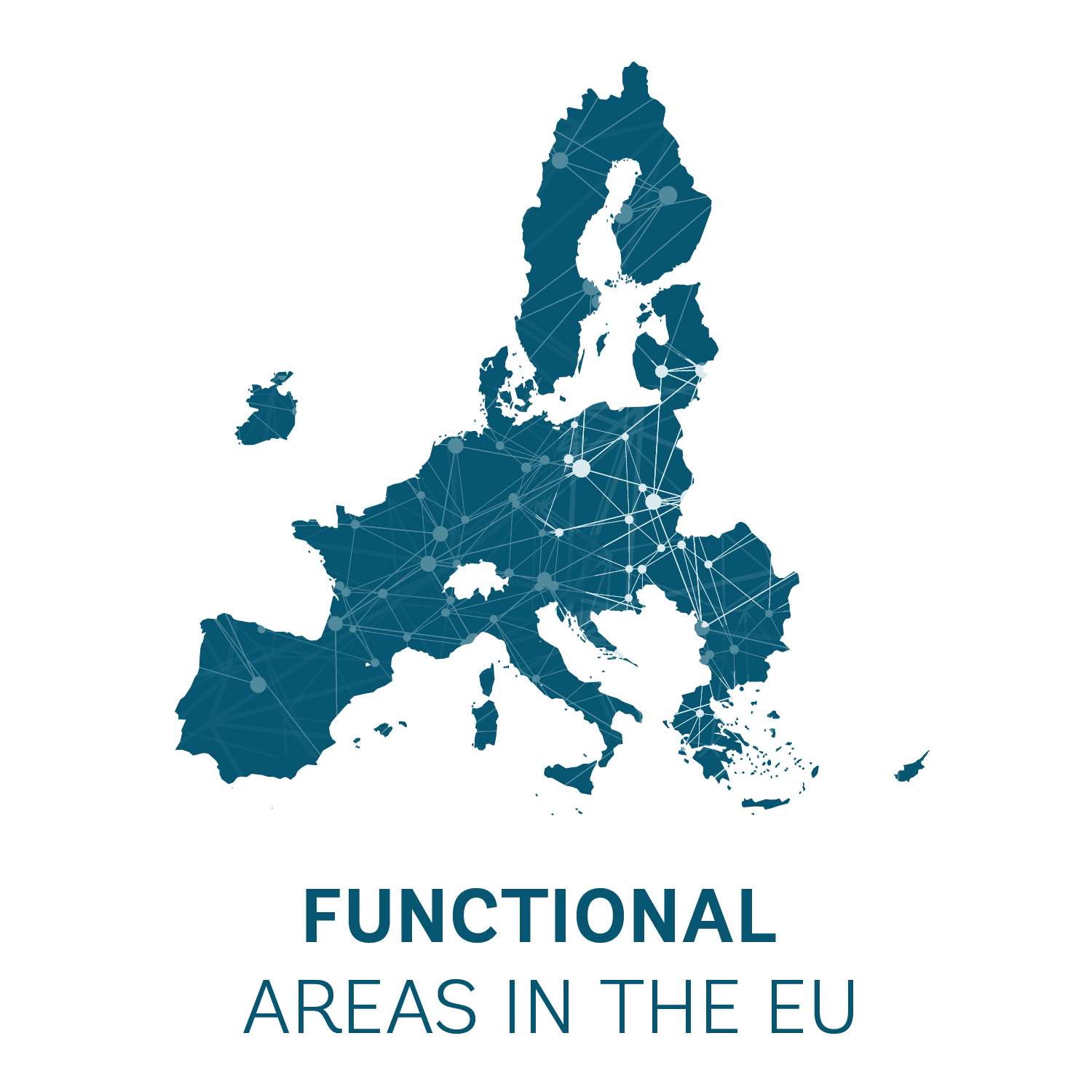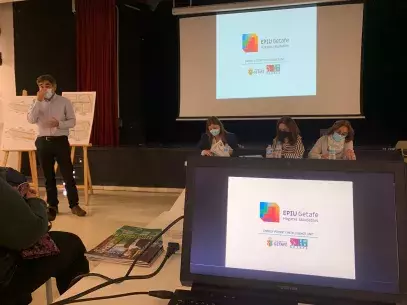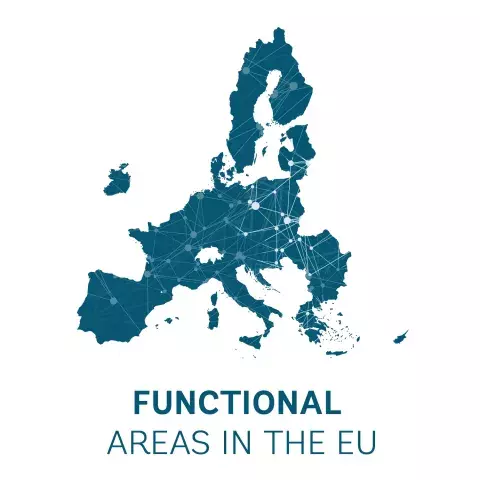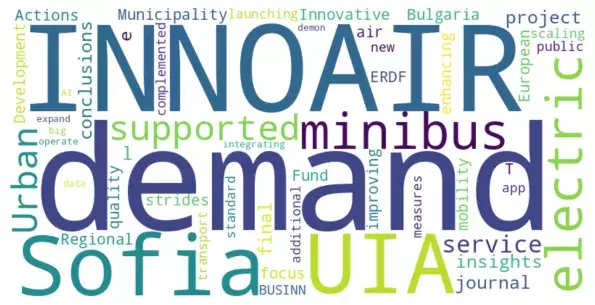
STRATEGIC PLANNING | GOVERNANCE ChallengeThe lack of cooperation on FUA level, without formal inputs that would cover the metropolitan issues and opportunities, and dealt with the integrated metropolitan development. SolutionKey action: placing integrated approaches and solutions at the centre of the elaboration of the Integrated Strategy of BMA Development 2014 – 2020 and of the Integrated Development Strategy of the Brno Metropolitan Area 21+. The Brno Metropolitan Area promotes, guides, and supports member localities to think, plan and act at the metropolitan level in order to transform together the area into a “ sustainable, balanced, pleasant and a prosperous place to live”, even in the absence of dedicated legislation on metropolitan areas. A constant dialogue is incremental, hence, BMA strongly encourages all members to develop strategic documents by keeping in mind how it will affect its surroundings, use Brno Metropolitan Area‘s data and its datasets, be present at metropolitan conferences and meetings, and share know-how and best practices. The starting point for metropolitan cooperation was the Integrated Territorial Investments mechanism Brno Metropolitan Area (BMA) is a stand-out example of a European functional area at national level and beyond. It was created to lead the implementation of the European Integrated Territorial Investment instrument (ITI) and help local authorities think about their development in an integrated manner to tackle challenges. Hence, the local authorities established a coherent form of governance, elaborated their first integrated development strategy, and accessed the needed financial resources. The process to establish Brno Metropolitan Area can be summed up in three important steps: In 2013 the BMA was delimited and the dialogue between the city of Brno with surrounding municipalities could be more enhanced/strengthened. The first Integrated Strategy for the Brno Metropolitan Area was elaborated, while in parallel the memorandum on cooperation between five municipalities with extended powers was signed. The implementation of projects in BMA in the 2014-2020. BMA’s governance mechanism encompasses the Brno Metropolitan Area Steering Committee as the governing body. The Steering Committee evaluates the compliance of the submitted projects with the Strategy and recommends them for possible financial support. There are also working groups involved in the preparation and coordination of the individual integrated projects and the preparation of reference documents for the Steering Committee. The working groups are divided into thematically-oriented areas according to the main topics of the strategy. The department of ITI Management and Metropolitan Cooperation coordinates the implementation of the strategy and the development of metropolitan cooperation through the ITI instrument. Integrated Strategy of BMA development 2014-2020 The first Integrated Strategy of BMA development 2014-2020 addresses the transformation of the area into a “flourishing, healthy and accessible metropolis”, and was elaborated around transport and mobility, environment, competitiveness and education, and social cohesion. Overall, the establishment of BMA and the development of the strategy faced the following challenges: delays in ITI settings for EU 2014-2020 period, different approaches and opinions from managing authorities regarding ITI mechanism, covering only EU topics, the lack of legislation on metropolitan areas. However, despite all challenges, the actions were completed and the result was (1) a cooperation agreement, (2) a metropolitan vision, and (3) strategic projects and integrated solutions. In order to successfully elaborate the development strategy under ITI, the focus was on spatial integration, coordination in implementing projects, financial integration, and organisational integration (involving all stakeholders). Overall, between 2014-2020, BMA developed over 125 projects. Integrated solutions developed under the Integrated Strategy of BMA development 2014-2020 Source: Brno Metropolitan Area Description of changes between the Integrated Strategy 2014-2020 and 21+ Source: Brno Metropolitan Area Integrated Development Strategy of the Brno Metropolitan Area 21+ All the efforts and lessons learned during the elaboration of the Integrated strategy of BMA development 2014 – 2020 were put in action for the next programming period to design the updated version of the strategy – the Integrated Development Strategy of the Brno Metropolitan Area 21+. This process was conducted with dozens of mayors, officials, academics and other BMA experts in working groups and a steering committee to identify the priorities and goals to pursue in metropolitan development and planning after 2021. The BMA defined the following integrated solutions: “(1) A stand-alone unique metropolitan project that is distinctive and irreplaceable in the metropolitan area and has a significant acceleration and multiplier effect; (2) An integrated solution consisting of a set of thematically focused or implemented projects in a defined area; (3) Network integrated solution that comprehensively solves a specific problem through the implementation of a set of similar (network) projects”. In BMA’s view, the key for elaborating development strategies at metropolitan level is to analyse both challenges and opportunities from an integrated perspective, which implies that interlinked projects form a strategic project (integrated solution). For the period 2021-2027, the integrated approach was set along 4 dimensions: territorial (projects and activities implemented at the metropolitan level), thematic (coordination of activities related to the same topic), financial (joint funding resources) and organisational (cooperation and coordination in terms of governance), aimed at reaching a network of integrated solution, significant impact on agglomeration, and interconnected integrated solution. Furthermore, the topics on its development agenda are sustainable metropolitan/local mobility, global accessibility, water, landscape and waste management, modern and safe energy, education, meaningful infrastructure for citizens and businesses, infrastructure, and services for people in need, fostering cooperation, tourism and cultural heritage. Another important aspect is the new methodology of delimitation of the area, which was created based on metropolitanisation processes, thus representing a functional urban area with natural links. In this case, this strategy manages to expand its strategy topics on all metropolitan issues, additionally to the ones financed by EU funds. Vision and structure of Integrated Strategy 21+ BMA’s vision for 2030 consists in improving the environment for development coordination “to ensure that the Brno Metropolitan Area develops into a pleasant and prosperous place to live in a sustainable and balanced way.” Altogether, the local authorities aim at building “an area with a functional transport system, with accessible and quality public services and limiting adverse environmental impacts”, says the Integrated development strategy of the BRNO Metropolitan Area 2021+. According to Brno Metropolitan Area, the strategic document comprises 3 parts: analysis, strategy (priorities, thematic topics, measures, and integrated solutions) and implementation. Its priorities are mobility (metropolitan /local sustainable mobility; global mobility of BMA), environment (water and land in BMA; waste management in BMA; modern and safe energy), public services (education and learning; infrastructure and services for needy/ at-risk residents), and coordination of development (development and institutionalisation of cooperation in BMA, residential and commercial development, spending free time). In terms of finances, similar with other EU countries, in Czech Republic exists operational programmes established and prioritised at national level, and BMA has the following sources of financing at its disposal reserved via the ITI instrument: the Integrated Regional Operational Programme (IROP), Transport (OP T), Environment (OP E), Employment (OP Emp), and Technology and Applications for Competitiveness (OP TAC). Another important part is the approval process, followed by the implementation part. In the case of implementation, BMA highlights the evaluation aspect, which indicates the impacts of the implemented integrated solutions in relation to objectives of the Integrated Strategy of BMA 21+. To evaluate, they use data sources, information on implemented projects, interviews with stakeholders in the territory, and so much more. Additional developed materials to support metropolitan planning Atlas of Brno Metropolitan Area Sociodemographic and transport behaviour analysis Metropolitan indicator systems (The data at metropolitan level can be found on Brno’s data portal) Questionnaire among mayors of municipalities in BMO (2017- 2020 – topics, interest to join, framework for cooperation) Marketing of metropolitan cooperation (exhibition, campaign, newsletters, national conferences) The managerial summary of the Integrated Development Strategy of the Brno Metropolitan Area 21+ can be downloaded via this link. Download Managerial SummaryOther best practices Tourism, culture and brandingHarnessing the Untapped Potential: The All-Season Tourism Masterplan for Jiu ValleyJiu Valley & Jiu ConurbationContinue reading Best Practices | Urban regenerationUrban-rural linkages: regeneration of public spaces in the Cluj Metropolitan AreaCluj-Napoca Metropolitan AreaContinue reading Governance | Strategic planningIntegrated Development Strategy of Brno Metropolitan AreaBrno Metropolitan AreaContinue reading 12Next
About this resource
In 2021, the European Commission launched a pilot project to improve functional area approaches in the EU and has partnered with the World Bank to implement this initiative. As part of the project, the project team collaborated with 12 functional areas from seven EU countries, providing them with tailored technical support and assistance: Zagreb Urban Agglomeration (Croatia), Brno Metropolitan Area (Czech Republic), West Athens (Greece), Lake Balaton Area (Hungary), Kalisz-Ostrów Agglomeration, Kraków Metropolitan Area (Poland), Jiu Valley and Jiu Conurbation Functional Area, Caraș-Timiș Functional Area, Cluj Metropolitan Area, Oradea Metropolitan Area, West Ialomița Functional Area (Romania), and Trenčín Functional Area (Slovakia).
Similar content




